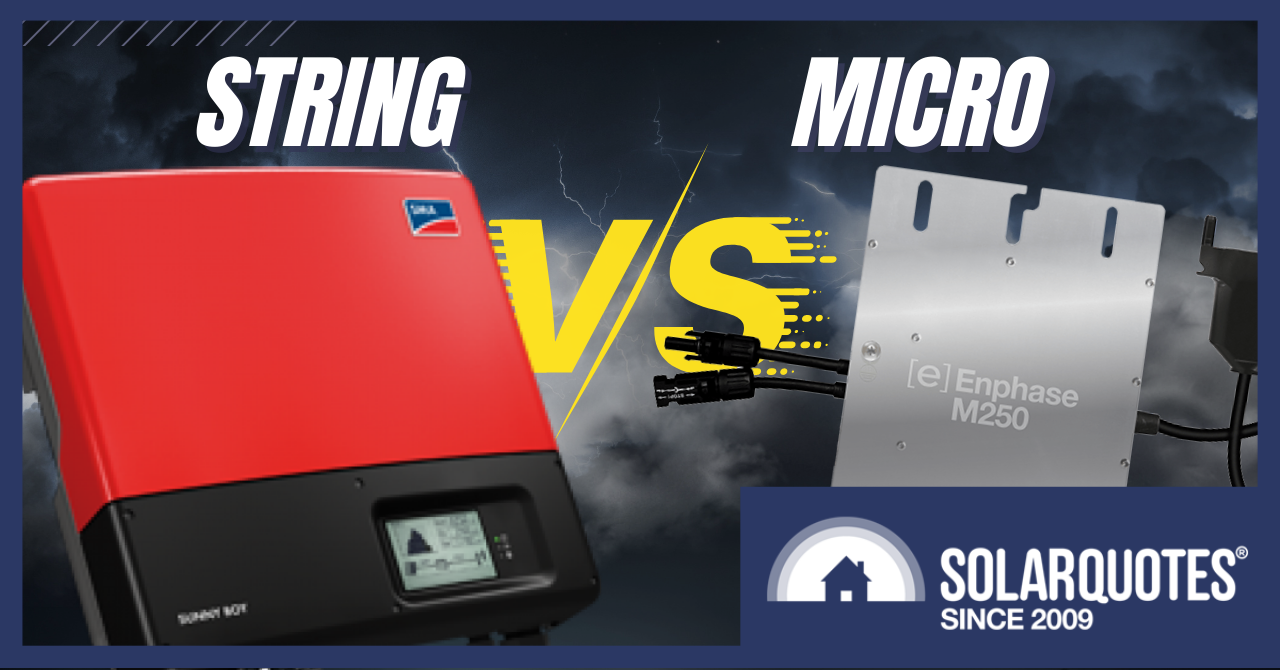
If you asked me what type of inverter your rooftop solar system should use:
- A string inverter — like most solar systems in Australia, or…
- Microinverters — a little baby inverter that goes under each panel.
I would say…
“Go with whichever you like. Unless there are special circumstances it makes little difference. Don’t stress out if salespeople try to convince you one is significantly better than the other.”
I do have evidence to back up this advice. It’s not like my wig — something I just pulled out of my hat:
But if you think Finns and Australians are a little flaky and you’re only interested in advice from properly cheese-appreciating nations, then today is your lucky day. A kind commenter recently referred me to a French study that says the overall output of the two types are essentially equal.
The paper is called:
“Performance ratio of photovoltaic installations in France: Comparison between inverters and micro-inverters”
You can read the whole thing here or, if you prefer, just read my summary since I’m going to condense it like milk, just giving you all the sweet details you need to know.
But before I do that, I will let you know the authors have some strange ideas about string inverters. They don’t think they’re reliable, so they recommend microinverters even though they found their performance to be the same. This makes me think the authors are all French croissants and so deliciously flaky. In my experience, string inverters last longer than the 8-12 year figure they give.
Or at least they last a lot longer if you buy one that isn’t merde.

But I assume you’re smart enough to check out our Solar 101 Guide and use a brand on our recommended chart that’s likely to last for well over 10 years:
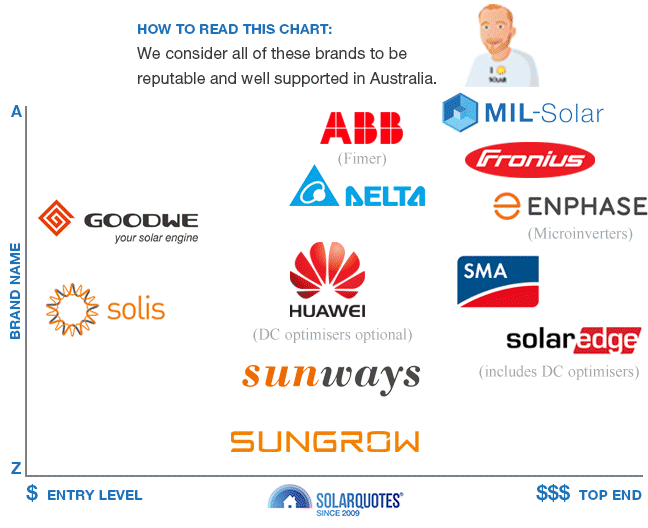
How Our French Friends Did The Study
The study examined the performance of 200 solar systems1. The study authors evenly split the solar systems between string inverters and microinverters:
100 String Inverter Systems: These were all SMA inverters either:
- Sunny Boy 3000
- Sunny Boy 5000
- Sunny Tripower 8000
100 Microinverter Systems: These were all Enphase microinverters of four types:
- M210
- M215
- M250
- IQ7
SMA is Europe’s most common string inverter, with 40% of string inverters in the database. Microinverters in Europe — and pretty much everywhere else — are nearly all Enphase.
Average Age Of Systems
The average age of the string inverters was 7.6 years, while it was 2.8 years for the microinverters. This difference is not good because solar panels very slowly deteriorate in output over time. This is likely under 0.5% a year for decent quality panels.
Because the microinverter systems average 4.8 years younger, it gives them an unfair advantage when comparing their output.
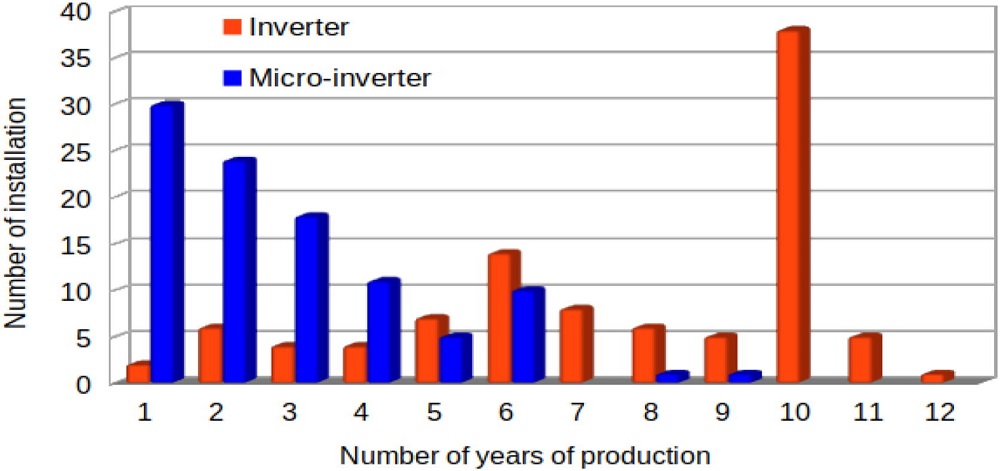
If French rooftop solar systems deteriorate at an average rate of 0.4% per year, the 4.8 year average age difference would reduce the output of string inverters by 2%.
The study doesn’t attempt to adjust for the age difference but merely states:
“As the data with inverters is over a longer period than for micro-inverters, the Performance Ratio can even be considered to be slightly lower for micro-inverters.”
Average String Inverter System Size Was Small
The 100 string inverters consisted of:
- 50 Sunny Boy 3000
- 25 Sunny Boy 5000
- 25 Sunny Boy 8000
This made the average string inverter capacity 4.75 kilowatts. This is higher than the average inverter size for their database, which was only a little over 3 kilowatts. This low average size is important because string inverters tend to become slightly more efficient as they increase in size, while the efficiency of microinverters remains the same no matter what size the solar system using them is.
With the average residential inverter size now around 7 kilowatts in Australia, ours will have slightly better average efficiency than the French sample.
Enphase Microinverters Only
Enphase is by far the largest manufacturer of microinverters and were the only type in the study. Their numbers and types were:
- 41 Enphase M250
- 28 Enphase M215
- 30 Enphase M210
- 1 Enphase IQ7
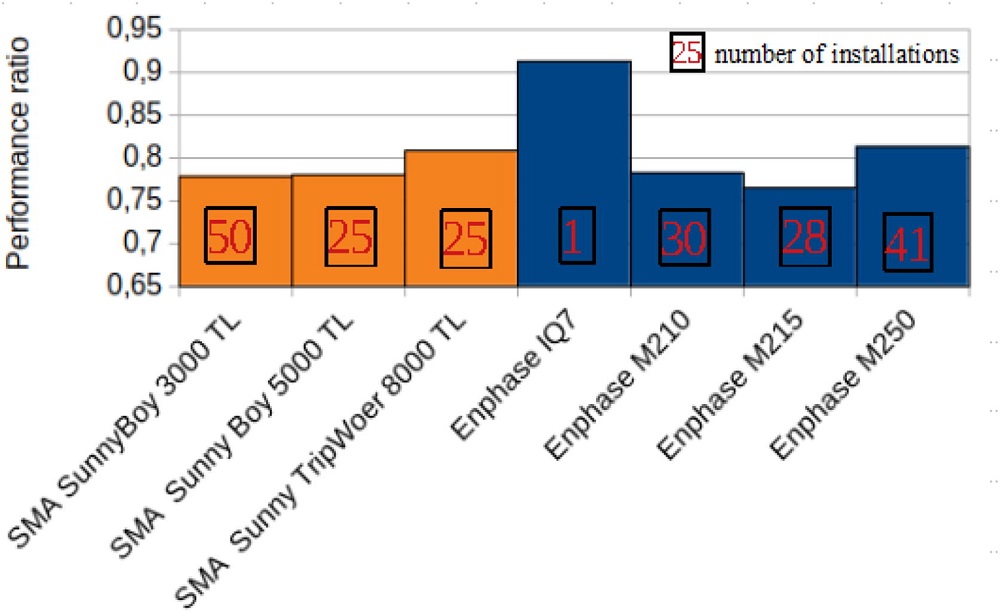
This graph shows the string inverters and microinverters in the study. The one system using Enphase IQ7 microinverters has a high-performance ratio, but the result would probably look more average if there had been more of them. Although it is possible that the newer IQ7s perform much better than the old M series.
System Location
The solar systems were located in metropolitan France. This is the main part of France between Spain and five other European countries with an inadequate appreciation for mimes.
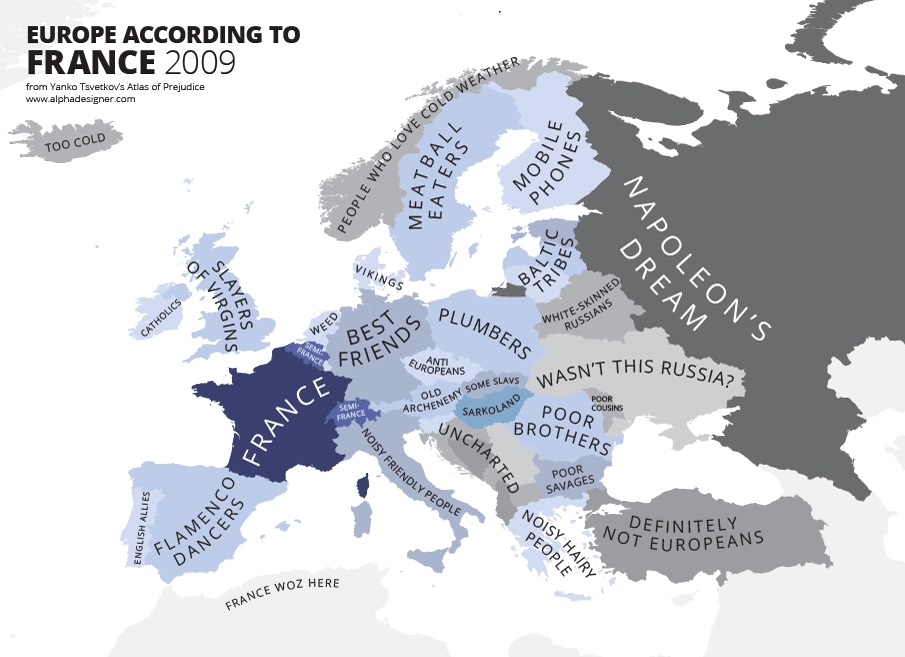
Determining Performance Ratio
To compare string inverter systems with microinverter systems, they determined the Performance Ratio for each solar system by comparing its actual output to its maximum theoretical output if there were no losses. To determine the theoretical maximum for a solar system, they took into account:
- The amount of sunlight energy received at its location.
- Panel tilt.
- Panel orientation.
- System size.
When they divided the actual output of the solar systems by their theoretical maximum, they got an average of 79% for both string inverter and microinverter systems. This was contrary to the authors’ “initial intuition”, which was the latter would perform better.
Despite finding no difference between the systems compared and saying the performance ratio for microinverters should be considered a little lower if age is taken into account, the study recommends using them. The reasons they favour microinverters are where I think the paper gets a little strange.
Study Says Microinverters Win On Total Cost
The study says microinverters are cheaper overall. The graph below from the paper shows that — in France — string inverters are cheaper than microinverters if more than five panels are installed. The mostly straight, blue line represents their cost. The dotted grey line represents the cost of string inverters:
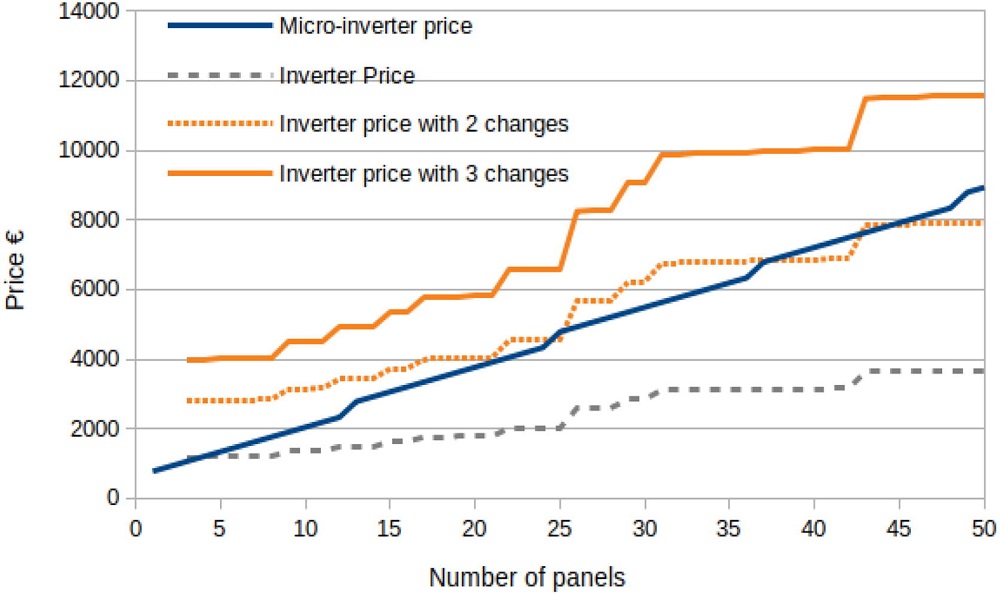
The cost of string inverters includes a 279 Euro weather cover. That’s around $416 Australian dollars at today’s exchange rate of 0.67 Euros to the dollarydoo. For replacement string inverters, no allowance is made for the fact these are likely to be cheaper in the future. It’s almost as if they were looking for ways to make string inverters seem more expensive.
But they say a string inverter will have to be replaced twice in its lifetime while microinverters won’t. I don’t know what kind of antifreeze they’ve been putting in their wine, but this idea is nuttier than gateau aux noix.

“Gateau aux noix” or “cake with nuts” if you’re an anglophone. (Image: Cuisineaz)
The paper assumes string inverters only last 8-12 years, while microinverters last 25-30. According to the authors, a string type will have to be replaced twice to last as long as microinverters.
If any of the authors are reading this, I want them to listen very carefully…
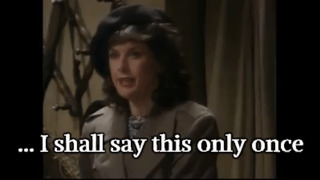
String inverters and microinverters are the same damn thing. One is just bigger than the other. If a microinverter can last 25-30 years there is no reason why a string inverter of similar quality can’t last as long. It should actually last longer because string types are normally placed where temperature extremes are less than under a solar panel.
The authors make a big deal that Enphase microinverters can have a 25 year warranty, but this depends on location. In Australia, it’s only 10 years, as this table from the Enphase Australian/New Zealand warranty document shows:
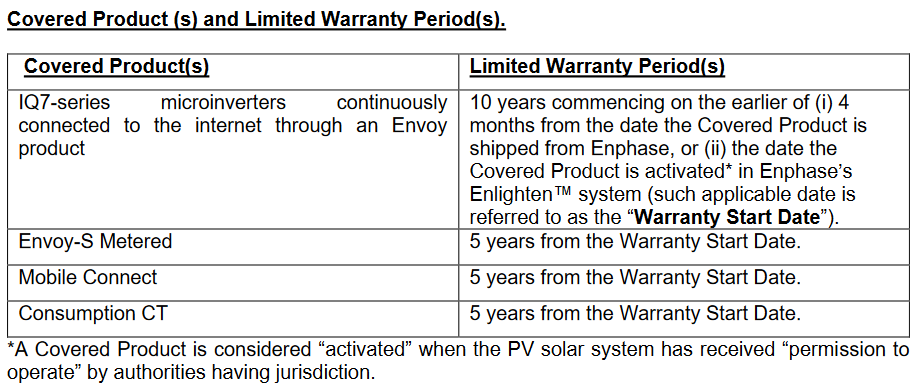
I think it’s likely the authors have arrived at a misunderstanding of how long string inverters are likely to last stemming from two main factors:
- Microinverters have to be reliable because they’re difficult to replace.
- Europeans are suckers for extended warranties.
Microinverters Have To Be Reliable
Microinverters go on the roof under solar panels and so are a lot harder to replace than string inverters. They require a ladder, safety precautions for working at heights, solar panel removal, and so on. Because of this expense, if they didn’t have a long warranty no trustworthy installer would want to use them. It’s also not enough to just give them a long warranty; they have to be genuinely reliable otherwise the cost of replacing them will drive the manufacturer and/or installers broke.
Reliable electronics cost more than crap electronics, so microinverters aren’t cheap. But provided you are willing to pay for a quality string inverter, there’s no reason they can’t last as long as the 25 years Enphase microinverters are warranted in Europe and the USA. We know good quality string inverters can last for decades because many have. For example, I have a friend whose solar system was installed in 2003 and its original SMA is still operating without problem after 19 years.
Europeans are Suckers For Extended Warranties
One of the odd things about solar inverters is good quality low-cost ones, such as Solis and Goodwe, come with 10-year warranties; but more expensive European made inverters such as Fronius and SMA only come with 5 years of full warranty2, despite being regarded as very reliable.
The reason why they have shorter warranties than lower cost inverters appears to be so their manufacturers can sell extended warranties. These are popular in Europe and some Australians pay for them too. But note they are less valuable here because we’re protected by Consumer Guarantees that can apply after the written warranty has ended — especially if you paid a premium price for a product.
My Conclusion
String inverters and microinverters have their own individual advantages and disadvantages, but if you are just looking to get solar installed on a typical roof, there’s not a lot of difference between them.
Microinverters aren’t cheap, but if you decide to go with Enphase — by far the most common type in Australia — you should be getting a reliable product that’s unlikely to fail for decades. But note, there is — quite literally — no guarantee it will last for decades in Australia.
If you instead get a system with a low cost but reliable string inverter, you can expect the inverter to last for well over a decade. If you pay for a high-quality unit, you can also expect it to last for decades. As with microinverters in Australia, there is no guarantee it will last for decades, but it’s easier to replace if it does fail.
You don’t need to worry about which will give you the best output. My experience matches the French study that says they’re much the same. So don’t be too worried about which is best for your home. Just go with whichever you prefer.
Footnotes
- They took this information from the BDPV database. I took a look at that site and, using the knowledge I obtained from studying French in high school for five years, I worked out the information there was definitely in French. There was a button I clicked to change it to English, but that made it seem far less romantic. ↩
- They may also come with an additional 5 years of limited warranty that only covers the cost of a replacement inverter, but not transport or installation. ↩

 RSS - Posts
RSS - Posts



my 2c worth: Personally, I have 2 systems: a Fronius 10Kw 3 phase, now about 7yo. Only failure has been 1 panel (250W Jinko) & the recent flood in Lismore (inverter on a mezzanine floor, so out of flood, but so far only 1 phase restored, so no PV. If I rebuilt this system, I would use Microinverters or SolarEdge Optimisers system due to roof safety during floods. (Current system has ~500V DC floating around roof. Not good with resident access to roof during a flood in Lismore NSW!
Second system is a 2 phase rural system: 2 of SolarEdge SE5000 inverters, & optimisers on all panels. It has moderate overshadowing from trees. I also use some ´recycled´ panels in this system. A normal String inverter would not work in this case (due to overshadow & s/h mixed panels). This system cracks! 80Kw generation in summer, & 40-50 during winter (off ~15Kw of panels).
My reasons for the Lismore installation is it is an E & W installation, with virtually no overshadowing. Reliable, but if changed later I will go for a more flood-safe system. (Would not be surprised if a Govt subsidy came to ensure flood safety for PV systems in flood areas later).
On the second S/E system, I had 1 optimiser fail, that was replaced under warranty. My early SE5000 inverters were also replaced with the more reliable screenless inverters under warranty. I can only say the support on both my systems has been excellent.
This mentions nothing about shading. Are not microinverters likely to be more efficient when shade is liable over some or all panels at some time?
I don’t go into shading in the article itself, but if you watch the video I embedded in the article:
You’ll see there’s not much difference in the simple test performed. This matches other comparisons I’ve seen. I’m sure it’s possible to come up with specific circumstances where one will perform better than the other, but there does not appear to be much difference in performance in general when it comes to shade.
Optimizers vs microinverters. Optimizers has an initial 2 % efficiency advantage.
Now look at componet complexity and mttf. Lastly look at robustness and ease of replacement.
When we hit 20 years of data we will be able to get a better grip on overall system costs. Both architectures have pros and cons.
Thanks Ronald, always interesting to hear more on this topic.
And yes, ignoring those subject to flooding, and perhaps those with big shading issues, I prefer the idea of a string inverter for various reasons including serviceability.
You could have a situation where microinverters start to fail, be it from age or perhaps voltage spikes etc, and could end up having one failure after another, days, weeks or months apart.
From a service and repair perspective, that would be a total nightmare unless you replace them all.
What if, what if, what if. How many of these failures you dream of have happened David? We can cover 100’s of what if scenarios, including string inverter failures, which are all too common. You’re creating a situation that doesn’t normally exist, otherwise the micros would not sell in the numbers that they do – worldwide.
I personally chose Enphase 7a micros over string inverter as I like the tech. Just like someone chooses a BMW or Mercedes over a Mazda or Toyota. We have choice and I chose Enphase.
Very happy with my system, teamed with top of the range LG NeON panels.
Micro inverters seem the safest for me. We are yet to install.
We a have a veranda in the roof. You can easily touch the roof metal.
240 volts AC is a lot less than 600 volts DC, but I am concerned as an isolating switch seems to be called for.
An one with some thoughts????
I think it would be worthwhile for researchers like those mentioned in the post to download data from the site pvoutput.org – it has daily output data from tens of thousands of systems all around the world. Most systems list details on their panels type, size, orientation, inverter type, etc. Looking at the output efficiency data (total kWh per kW installed) I find my system (15 250W and 15 260W panels combined with Enphase M215 microinverters) is consistently ranked in the top 3 to 5% of all systems in the database (depending on the season) for output efficiency. That could simply be an artifact of my location, but a meta study that looked at say 10,000 systems from that data base that controled for solar insolation values, orientation, and tilt would be very interesting.
I just checked the pvoutput.org site today and currently my system is ranked 1,105 out of 44,071 systems for efficiency (top 2.5%). The system produces about 12.5 MWh of electricity in an average year. It has 7,650 DCW installed (6,750 ACW).
Gotta say..this study has M Series micro’s. Enphase aknowledges these things were aweful in terms of reliabilty, and they almost sent Enphase bankrupt.
The only IQ7 in the study seems to have performed significantly better than all the strings and other micro’s. And now, were on IQ8s…which have a 20-25 yr warranty. Plus heaps of other completely ‘pimp’ stuff like microgrid/grid services/anti-islanding etc.
So this study is really comparing a whole bunch of strings against one horrible micro, that has since been superceded.
Not really fair I’d say.
There is an “engineering purity” with the micro inverters but i have seen many examples where that theoretical perfection does not result in any practical benefit for the usually higher cost. As one poster commented, with the microinverters, you could have a cluster of failures weeks or months apart needing a $ervice call for each one. A string system with good quality panels is a far more practical and reliable solution as replacing a faulty inverter would be a far easier job. The only real advantage of microinverters is if you have shading issues otherwise you are vastly increasing the complexity and failure points for bragging rights like those audiophiles buying $2000 switches & $500 HDMI cables
As my roof top panels would easy to access the the micro inverters can be simple to change, as no ladder is required.
As the micro inverters give detail info on each panel then I could install the cheapest PV panels and monitor them and as the weakest fails then replace the bad one.
Often electronics never fail for a long time, eg ‘the bath tub’ failure curve.
So good idea?
Article author’s bias shown from the get go! Aside from shading of one panel affecting all, independence of panels and safety of avoiding high voltage DC on a roof are factors favouring microinverters ..
Gary, if there is anything wrong in the article, let me know and I’ll correct it.
Great article, nicely written, good to know that in general terms there isn’t a significant difference in performance between the two.
One area I can see the micro inverters being useful is if you expand your array. Adding panels with micro inverters adds capacity directly, whereas you might need to upgrade to a bigger string connected inverter (or buy another for the new string)
That said, I prefer the “keeping the inverter out of the weather” consideration for string inverters, although ii can appreciate the lower voltage safety considerations of micro inverters in flood prone areas.
“Whatever works in your situation will be fine” is good to know 🙂
Hi Ron, we had an Enphase system with 22 M215 microinverters installed in 2015. We have had every microinverter replaced under warranty in two batches. Enphase covered the new units as well ad an allocation per panel for installation and we paid a call out fee in each case. After each group of failures the whole system continued to function and provide power as well as charging the battery albeit at a reduced rate. We have serious shading and the individual panel outputs on each of the three strings of microinverters vary wildly during the day. My observation would be that microinverters work very well in shaded applications and offer a robust system architecture. I would also agree that when installing micro inverters people need to consider access to enable individual microinverters or indeed panels to be serviced. None of our panels have failed yet but hail is always a threat with microinverters a damaged panel can be replaced with anything that will fit within reason. String inverter systems may not be so happy in such a situation. Keep up the good work.